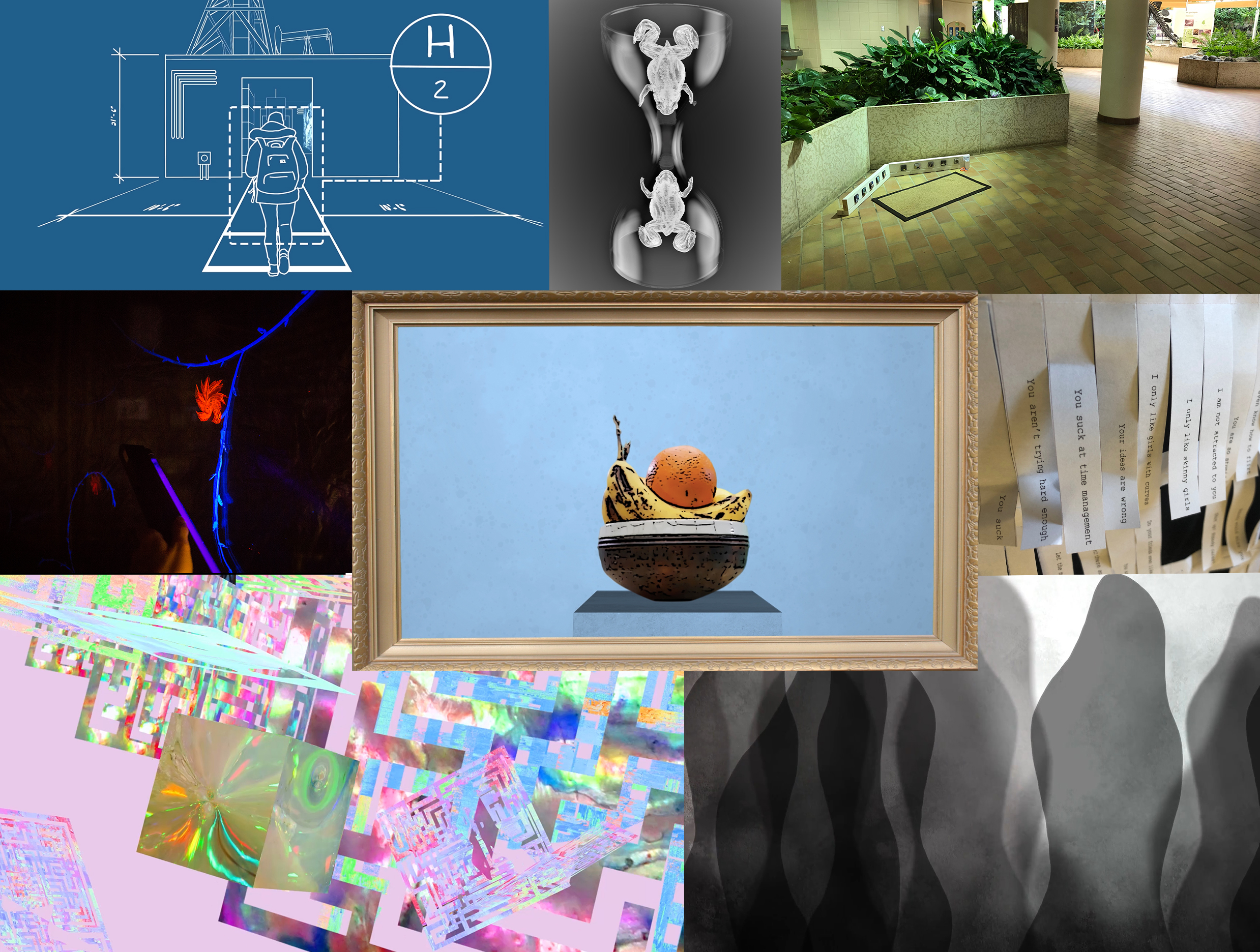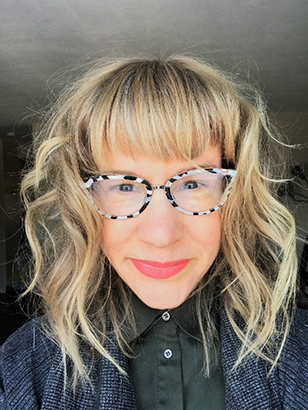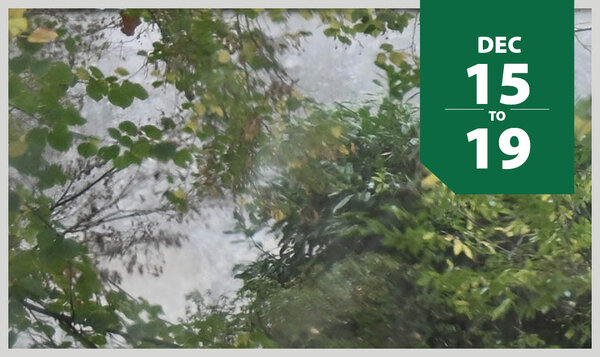
‘Art enriches our lives and experiences’: Nuit Blanche Eve welcomes visitors to USask for art-filled night
USask's first-ever Nuit Blanche Eve will be held at various locations on campus on Sept. 27 from 8 pm - 10 pm
By Shannon Boklaschuk
Well-known locations on the University of Saskatchewan (USask) campus will engage with visitors in new and exciting ways during the evening of Friday, Sept. 27, when they are transformed into interactive and digital art installations for USask’s first-ever Nuit Blanche Eve.
“Art and art events are the lifeblood of our cities. They bring us together, create environments in which to exchange ideas and have important conversations, and allow us to engage with something truly unique and magical,” said Professor Lisa Birke, the event organizer and a faculty member in the Department of Art and Art History in USask’s College of Arts and Science.
“Art enriches our lives and experiences.”
From 8 pm to 10 pm on Sept. 27, various USask locations will showcase installations, performances and projections by Jean-Sébastien Gauthier and Dr. Brian F. Eames, Marcel Petit, Fatemeh Ebrahimnejadnamini, Shawn Kauenhofen, Jaden Kraus, Emilie Neudorf, Rebecca Vereschagin and Lauren Warrington. The event is free and open to the public.

Nuit Blanche Eve is a collaboration between a number of partners at USask—including the Department of Art and Art History, the Canadian Light Source, The Observatory, the Museum of Natural Sciences, the Museum of Antiquities and the USask Art Galleries—and Nuit Blanche Saskatoon.
Nuit Blanche Saskatoon is an annual free nighttime arts festival that showcases art and culture in the city. The 2019 festival will be held on Saturday, Sept. 28, from 7 pm to 1 am throughout Saskatoon’s Broadway, downtown and River Landing areas.
While Nuit Blanche Saskatoon is now in its sixth year, Sept. 27 will mark the first Nuit Blanche Eve at USask. Nuit Blanche Eve grew out of a smaller Nuit Blanche preview evening held on campus in 2018, which was organized by Nuit Blanche Saskatoon curator and USask alumnus Michael Peterson (BFA’09, BSc’10). The preview evening featured an installation at The Observatory titled Celestial Mundane by artist and USask alumnus Andreas Buchwaldt (BFA’09).
“I started having discussions with Michael Peterson about participating in an expanded version of the preview evening while discussing a different project idea for the main festival,” said Birke, who teaches digital and integrated practice in the Department of Art and Art History.
“Andreas also gave a presentation about his piece in The Observatory in one of our classes, and so the pieces started falling into place. I am also always interested in establishing more opportunities for students to show the strong work that they are making in my classroom to a larger audience, as this provides students practical and exhibition experience.”
One of Birke’s classes examines the concept of body and space, including public art and relational performance. As a result, she decided to integrate the idea of installations in different USask locations into her course. Her students then researched one of three spaces on campus—The Observatory, the Museum of Natural Sciences and the Museum of Antiquities—and developed a performance, intervention or installation in response to what they discovered in or about the space.
In another class, Birke’s students built 2.5D environments—using Adobe After Effects software—with individually designed digital assets and virtual cameras and lights. She said the “obvious next step” was to build the virtual spaces in correlation to one of the real spaces on campus.
When the courses ended last spring, Birke’s students were given the opportunity to submit their class projects for consideration to be included in Nuit Blanche Eve. Seven projects were selected, and these projects will be featured at the event along two other projects by artists Jean-Sébastien Gauthier—working in collaboration with biologist Dr. Brian F. Eames (PhD)—and Marcel Petit. Petit’s video project will be projected on the Arts Tower.
Birke said one of the reasons she decided to organize Nuit Blanche Eve is because she always finds it “a bit sad to see so much fabulous artwork being made inside our classrooms that never gets to be shared with a larger public.”
“I think that the community will be excited to discover so much young artistic talent on our campus,” said Birke.
“It is also important to build bridges between the university and the community,” she added.
“Sometimes universities can feel siloed, and opening channels for exchange and conversation builds the creative and intellectual impetus surging through our city. Creativity inspires innovation and new ways of seeing the world. It is a bit of a cliché, but I really do believe that a strong, artistically diverse city is a healthy, vibrant city. Nuit Blanche Eve is also a nice way to connect the university to the already established success of Nuit Blanche Saskatoon and to be part of this positive energy.”
2019 Nuit Blanche Eve Projects
Artists: Jean-Sébastien Gauthier and Dr. Brian F. Eames (PhD)
Title: Our Glass
Location: Museum of Natural Sciences
Our Glass is a work of interactive SciArt co-created by artist JS Gauthier and biologist Dr. Brian F. Eames. It uses cutting-edge 3D microscopic images produced for artistic purposes at the Canadian Light Source, Canada’s only synchrotron facility. Our Glass engages viewers of all ages to peer within an hourglass, showing how embryonic development compares among animals with whom we share a close genetic heritage. This ongoing collaboration is made possible thanks to the support of the Canada Council for the Arts, the University of Saskatchewan’s Office of the Vice-President Research, the College of Medicine, the Canadian Light Source and the Saskatchewan Arts Board.
Artist: Emilie Neudorf
Title: Not-So-Still-Life
Location: Museum of Antiquities
Emilie Neudorf has an interest in social justice issues and the arts, which led her to study both sociology and studio art in a double major bachelor’s degree at USask. Not-So-Still-Life is a video installation that invites viewers to question the development of art through the depiction of eight major art movements: realism, impressionism, fauvism, cubism, surrealism, pop art, conceptualism and digital art. Located in the Museum of Antiquities, this theme is exemplified through the contrast between digital animation and classical Greek and Roman art.
Artist: Lauren Warrington
Title: Ancient Plains
Location: Museum of Antiquities
Lauren Warrington is a Saskatoon-based visual artist who received her Bachelor of Fine Arts degree from USask in 2019. Her video projection, Ancient Plains, is a response to the cultural and racial biases found in the traditional definition of classical antiquity. Contrasting colourful, evolving shapes with the homogenous, idealized forms of classical sculpture, her installation in the Museum of Antiquities will create a dynamic environment symbolic of continually shifting perspectives and the beauty associated with change.
Artist: Shawn Kauenhofen
Title: The Machine
Location: Museum of Natural Sciences
Shawn Kauenhofen is currently pursuing a Bachelor of Arts and Science degree in interactive system design at USask. The Machine explores how, in his view, academia’s best-laid plans have gone askew as public funding has not kept up with the growth of institutions. As universities have increasingly become reliant on corporate sponsorships to support their operations, Kauenhofen asks how this has led to institutions resembling the industries from which they are funded. This video is being projected within the Museum of Natural Sciences.
Artist: Jaden Kraus
Title: Two by Four Gallery
Location: Museum of Natural Sciences
Jaden Kraus is currently pursuing a Bachelor of Fine Art degree (honours) in studio art, as well as a Bachelor of Education degree, at USask. Two by Four Gallery is a temporary, miniature art gallery that will be shown in locations throughout the Museum of Natural Sciences. The artwork installed in the mini gallery will include submissions from the general public, allowing everyone to participate and have their work included. As well, Kraus will set up a make-and-take station where visitors can create their own mini masterpieces.
Artist: Jaden Kraus
Title: The Tear Away Series
Location: Moving throughout the festival site
Inspired by the comments received through social media about our physical appearance, personalities and identities, The Tear Away Series is a collection of interactive wearables discussing the impact of the words we say and how we cope with the words we hear. Comments will be collected through an online public survey, printed onto paper and sewn onto clothing, which will be worn by models walking throughout the festival site. Viewers are invited to approach a model and tear off a comment of their choosing.
Artist: Rebecca Vereschagin
Title: Transience
Location: The Observatory
Based in Saskatoon, Rebecca Vereschagin is a new USask graduate with a Bachelor of Arts degree in studio art. Transience explores the inherent temporariness of our surroundings and acts as a response to the realization that not only ourselves, but the world we live in, is ephemeral. Utilizing a 2.5D environment, the video—projected within the Arts Tunnel on the USask campus—moves the viewer through different worlds, spending only a brief time in each.
Artist: Fatemeh Ebrahimnejadnamini
Title: In My Veins
Location: The Observatory
Fatemeh Ebrahimnejadnamini is an Iranian artist pursuing her Master of Fine Arts degree at USask. In My Vein will be an installation in the basement of The Observatory. In 2017, Ebrahimnejadnamini was diagnosed with lichen planus, a chronic illness that leaves red and purple marks on the skin. Creating an external representation of her internal world, Ebrahimnejadnamini will use black light to illuminate a pattern of nerve cells painted on the otherwise darkened walls of The Observatory.


